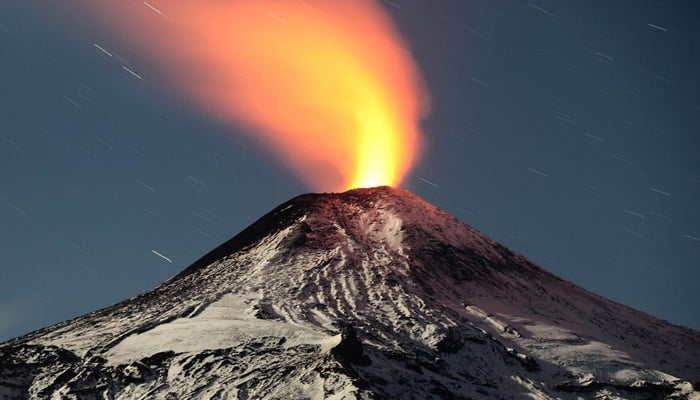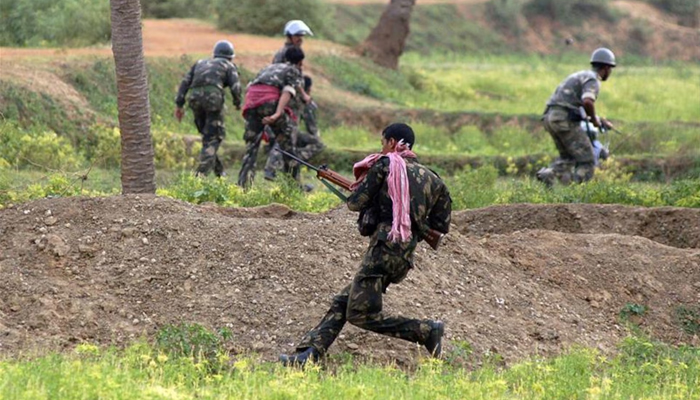US
Watering Cholistan
字号+ Author:Smart News Source:Sports 2025-01-15 08:04:10 I want to comment(0)
THE first phase of the Cholistan Canal project has stirred fresh acrimony between Sindh and Punjab. Sindh’s government, political parties and civil society are denouncing the project. The criticism has found expression in protest rallies, sit-ins and seminars in the province. Sindh’s chief minister and irrigation minister have condemned the project in unambiguous terms. But despite this criticism from the PPP-led provincial government itself, the project was endorsed by the president, the former PPP co-chairperson, in July this year, drawing the ire of the public. The province’s objections were overruled at a meeting of the Central Development Working Party last month. The CDWP disregarded Sindh’s dissent and referred the project to Ecnec (the Executive Committee of the National Economic Council) for further consideration. This prompted a perturbed Sindh chief minister to express his concerns to Federal Planning Minister Ahsan Iqbal. The Sindh government had earlier submitted a summary to the Council of Common Interests, challenging the project on technical grounds. According to the Sindh government, the CDWP and Ecnec should not consider the project until the CCI takes a decision on Sindh’s position. The Cholistan Canal is designed to divert 4,120 cusecs of water from Sulemanki Barrage on the Sutlej river to Fort Abbas, which lies at a distance of 176 kilometres. It will feed the 120km-long Marot Canal, which will transport the water eastward. This canal will fan out to irrigate 452,000 acres of desert land in Cholistan through 452km of distributaries and minor channels. The multipronged project costing Rs211 billion also entails capacity enhancement of three upstream inter-river link canals — Rasool-Qadirabad, Qadirabad-Baloki and Baloki-Sulemanki. This sprawling network is just the first phase of the Smaller Cholistan scheme which is a precursor to the far bigger Greater Cholistan scheme. The pending second phase of the Cholistan Canal project aims to irrigate another 744,000 acres in the same area. The Indus River System Authority had issued a water availability certificate for the scheme in January 2024. The member representing Sindh contested the move but he was outvoted by a 4:1 majority. The province, however, asserts that Irsa has no such mandate, therefore the water availability certificate is invalid. Developing a canal command area on the basis of unreliable flood flows is a questionable proposition. The scheme originally designed as a flood canal was subsequently converted into a perennial canal. In a pre-CDWP meeting, the federal Planning Commission had raised questions regarding the availability of water during the non-flood months. Since no water had been allocated for the Cholistan Canal in the interprovincial Water Apportionment Accord, it appeared logical for Punjab to divert some of its allocated water to feed this canal during the non-flood months. However, in such a scenario, the lower riparian within Punjab itself would also confront water shortages. The Planning Commission sought details from the Punjab government on the adjustment of the existing canal allocations to create water allowances for the new canal system. The original plan showed the most flows during July and August, the monsoon months. Developing a canal command area on the basis of unreliable flood flows is a questionable proposition. In the wake of climate change, it is difficult to predict flood flows. Obviously such a vast command area cannot be left parched during years when drought-like conditions persist. Sindh has raised apprehensions that during the dry years, the command area of the Cholistan Canal will be irrigated by the Mangla reservoir through upgraded link canals and the deficit downstream would be compensated by diverting water from the Indus through the Chashma-Jhelum and Taunsa-Panjnad canals. The Planning Commission also echoed similar concerns. Last year’s flood in the Sutlej was atypical. The Sutlej received floodwater from India due to intense rainfall during Aug 10-14 that raised the water to an alarming level in the two major dams, Bhakra (Sutlej) and Pong (Beas river). The Bhakra and Pong dams discharged 80,000 and 100,000 cusecs of water respectively. The flood reached Pakistan and wreaked havoc in Kasur, Okara, Pakpattan, Lodhran, Bahawalnagar, Vehari and Bahawalpur. It was the largest flooding by the Sutlej in 35 years. Such rare floods should not form the basis of feasibility for a flood canal. The flow data of the eastern rivers (Sutlej, Ravi and Beas) has reflected consistently dwindling discharges. The average flow in these rivers was 9.35 MAF during 1976-98 that declined to 2.96 MAF during 1999-2022. Surplus flows below Kotri Barrage have also declined drastically. From the period 2000-01 to 2022-23, there were 10 dry years when less than 8.6 MAF of water was discharged below Kotri — the minimum quantum of flow recommended by international experts. This indicates that the Indus river basin is experiencing frequent dry years. Declining flows to the Indus have already wreaked ecological havoc on the Indus Delta. In 2005, a panel of international experts studied the minimum water requirements for sustaining the Indus Delta ecosystem. It recommended the release of at least 8.6 MAF of water every year below Kotri Barrage. Sustaining the delta requires a certain amount of sediment to reach the shoreline to push against the upward sea movement. In the pre-Tarbela Dam years, 400 million tonnes of sediment flowed below Kotri Barrage, which was reduced to a mere 126 million tonnes post-Tarbela. Before the dam was built, the Indus Delta was increasing by 30 metres annually due to silt deposition. The process has now been reversed and the sea has encroached on previously fertile land in Thatta, Sujawal and Badin districts. Climate change can further aggravate the situation. A World Bank report, Pakistan’s Water Economy Running Dry reads, “the glacial reservoirs will be empty, and there are likely to be dramatic decreases in river flows conceivably by a terrifying 30pc to 40pc in the Indus Basin”. Amid such an uncertain hydro future, planning large-scale irrigation schemes is not wise.
1.This site adheres to industry standards, and any reposted articles will clearly indicate the author and source;
 Related Articles
Related Articles-
PM Shehbaz hails inflation drop to lowest level in 81 months
2025-01-15 07:29
-
کم آمدن والے ملازمین کے لیے حج لیبر کوٹہ کے تحت نامزدگی کی درخواستیں مطلوب ہیں۔
2025-01-15 06:55
-
ہوائی فائرنگ سے منع: عاصمہ نے سال نو کے موقع پر ذمہ داری سے جشن منانے کی اپیل کی
2025-01-15 06:39
-
عُرآن پاکستان: وزیراعظم شہباز نے اقتصادی خوشحالی کو سیاسی ہم آہنگی سے جوڑا
2025-01-15 06:33
 User Reviews
User Reviews Recommended Reads
Recommended Reads Hot Information
Hot Information- Punjab CM Maryam Nawaz heads to China for key diplomatic visit
- عُرآن پاکستان: وزیراعظم شہباز نے اقتصادی خوشحالی کو سیاسی ہم آہنگی سے جوڑا
- ہوائی فائرنگ سے منع: عاصمہ نے سال نو کے موقع پر ذمہ داری سے جشن منانے کی اپیل کی
- کُرّام امن معاہدے کے بعد، ایم ڈبلیو ایم کے سربراہ نے ملک بھر میں دھرنا ختم کرنے کا اعلان کیا۔
- Pakistan wants improved ties with Afghanistan, says COAS Munir
- یونانی کشتی حادثے میں مزید چار پاکستانیوں کی لاشیں ملیں۔
- رانا ثناء اللہ نے پاکستان کی اڑان کے لیے معاشی چارٹر کے مطالبے کو دوبارہ پیش کیا
- پاکستان اور بھارت نے جوہری تنصیبات اور قیدیوں کی فہرستیں آپس میں تبادلہ کیں۔
- Pakistan reports four new polio cases, bringing tally to 63 in 2024
 Abont US
Abont US
Follow our WhatasApp account to stay updated with the latest exciting content













